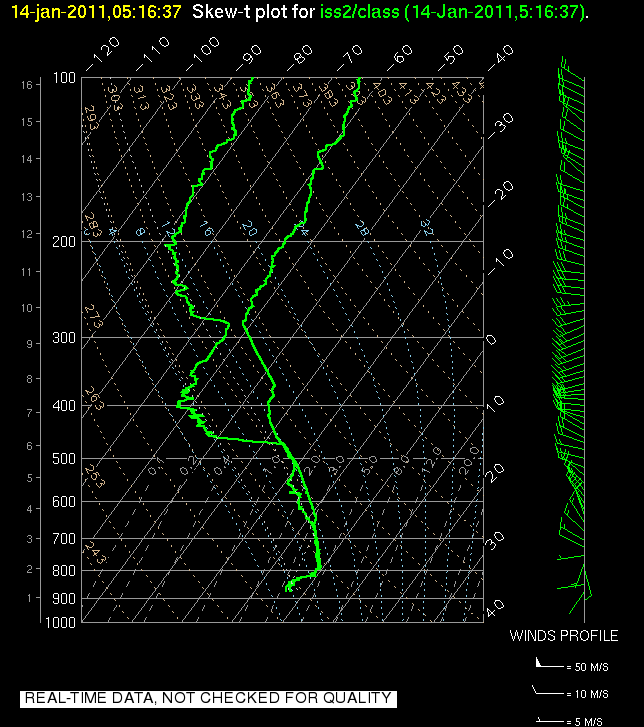Canyon IOP:
We managed to coordinate 5 radiosondes this morning, two within the valley (one of which was the NWS Operational sounding) and three running up Parley's Cayon, a major drainage to the East of Salt Lake. We've been speculating for a long time that the nocturnal drainage flows down this particular 'airshed' are of particular importance to the mass budget and cold air accumulation within the Salt Lake Valley. Now we have some data to help elucidate some of these processes. We also have the first hand experience of just how cold and windy it was. After launching a balloon half way up the canyon this morning (which took about 1.5 hrs) it took me a full 3 hours under a thick blanket to warm back up.
We'll do the same thing on Friday, and with clear skies overhead the drainage flow could be even more pronounced. In addition we may have some clouds and fog in the valley which may help to visually demonstrate the degree to which the drier canyon flows penetrate into the valley cold air pool.

Side wall IOP and convective boundary layers
We also launched balloons this morning and afternoon to look at difference along the east and west side walls of the salt lake valley. The idea here is that differential heating caused by the changing sun angle over the course of the day may create local thermal flows favoring east-west asymetries in the cold pool structure. We also got to observe the growth of the convective boundary layer within the bottom portion of the cold air pool.


Regional Flows and Lake Breezes.
Another topic for thermally driven flows is the regional scale diurnal wind reversal that occurs during daytime heating. In the morning hours the salt lake valley exhibits organized Southeasterly drainage flow towards the lake, which is the low point. In the afternoon, if sufficient solar heating occurs, the flow reverses to an up valley flow from the NW. When this reversal occurs there is sometimes also an embedded more local lake breeze that develops due to the heating differences of the water and land surfaces. We saw both of these occur today with some portions of the valley experiencing spikes in the dewpoint temperature as lake air was advected into town. Just after sunset there was also a fog front that moved in from the NW obscuring portions of the downtown area. Fog was much more extensive in valleys to our west, and some of this 'fog front' may have moved in from the Toole valley. 'Interbasin' exchanges of air such as this are a big complicating factor on our cold air pools.
We're looking forward to the next few days of intense observations and hope to share some more of the data with you soon.



















